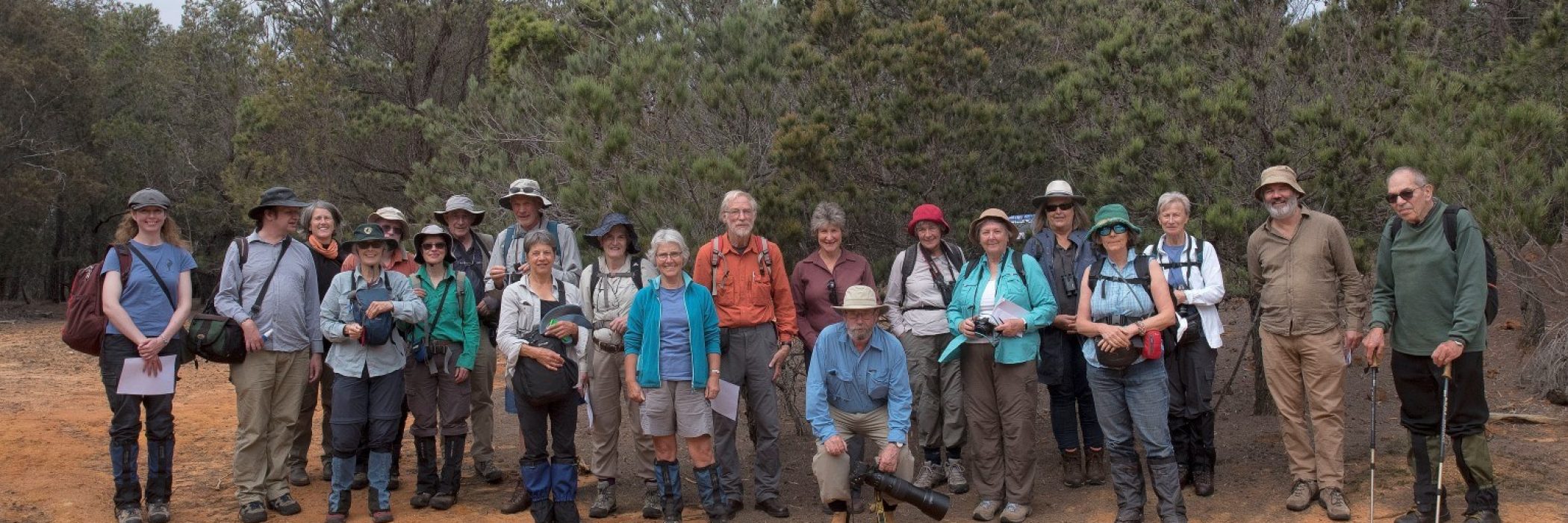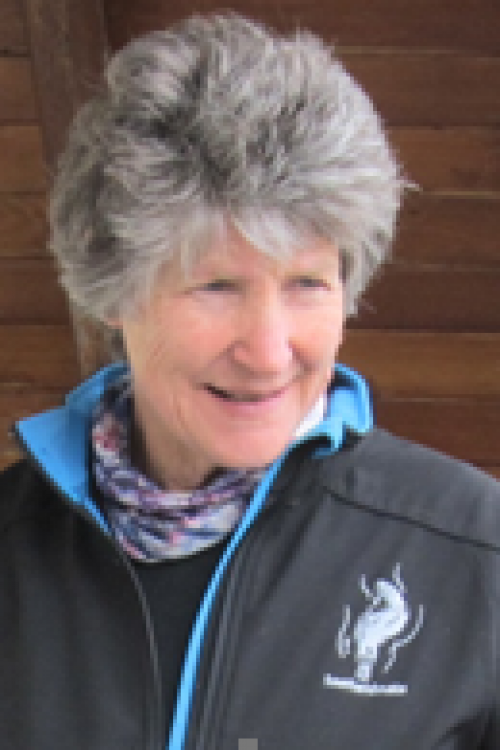Naturalists rewarded with fascinating species discoveries at coastal woodlands and wetlands reserve they helped protect
On Saturday 16th May, 22 ‘Field Nats’, members of the Tasmanian Field Naturalists Club (TFNC), and friends assembled at The Big Punchbowl Reserve’s car-park for a boot-scrubbing and disinfecting ceremony to prevent the introduction of the root-rot pathogen (Phytophthora cinnamomi) which devastates many heathland species including the slow-growing grass-trees (Xanthorrhoea). As TFNC donated towards The Big Punchbowl’s protection, we looked forward to this two-day field trip. The obligatory group photo was interrupted by a charming wolf spider which attracted the cameras, but we eventually headed off down the track towards The Big Punchbowl. The woodland was dominated by Eucalyptus amygdalina, Allocasuarina, Banksia and Kunzea ambigua and occasional E. viminalis.
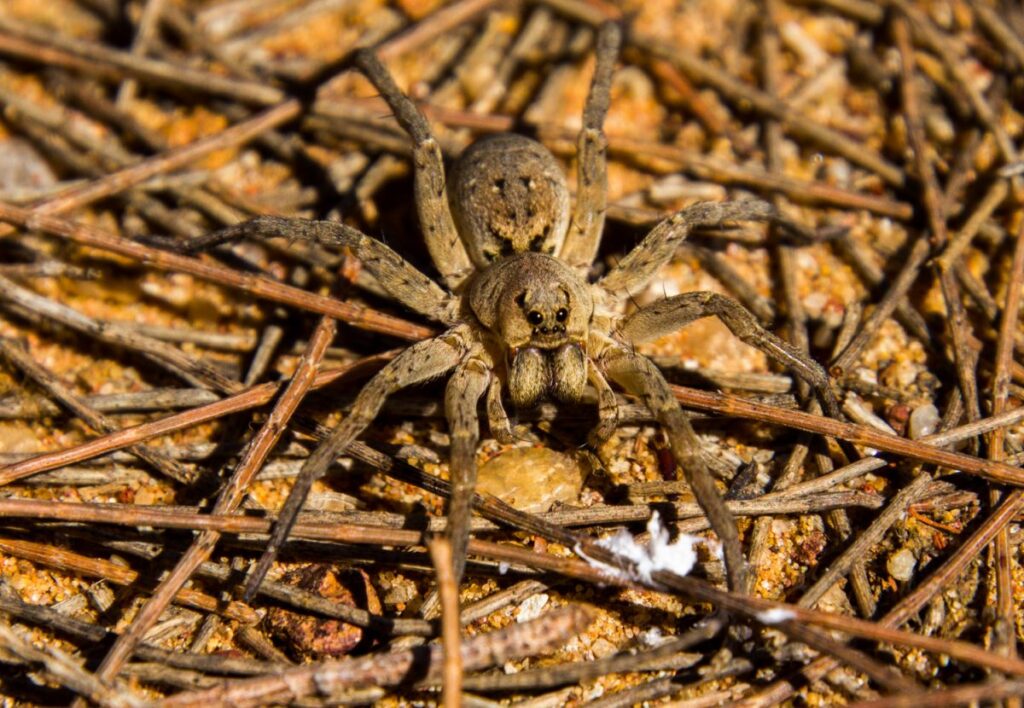
Butcher birds were calling, butterflies and dragonflies flitted about and a cacophony of cicada and cricket song was ever present. Many discarded cicada shells festooned shrubs. Underfoot the ground was springing with grasshoppers including the pygmy grasshopper. A spectacular spiky black and white spiny spider (Austracantha minax) clinging in its a web caused some excitement, as did gorgeous iridescent green Christmas beetles.
A spectacular spiky black and white spiny spider (Austracantha minax) clinging in its a web caused some excitement
— Janet Fenton
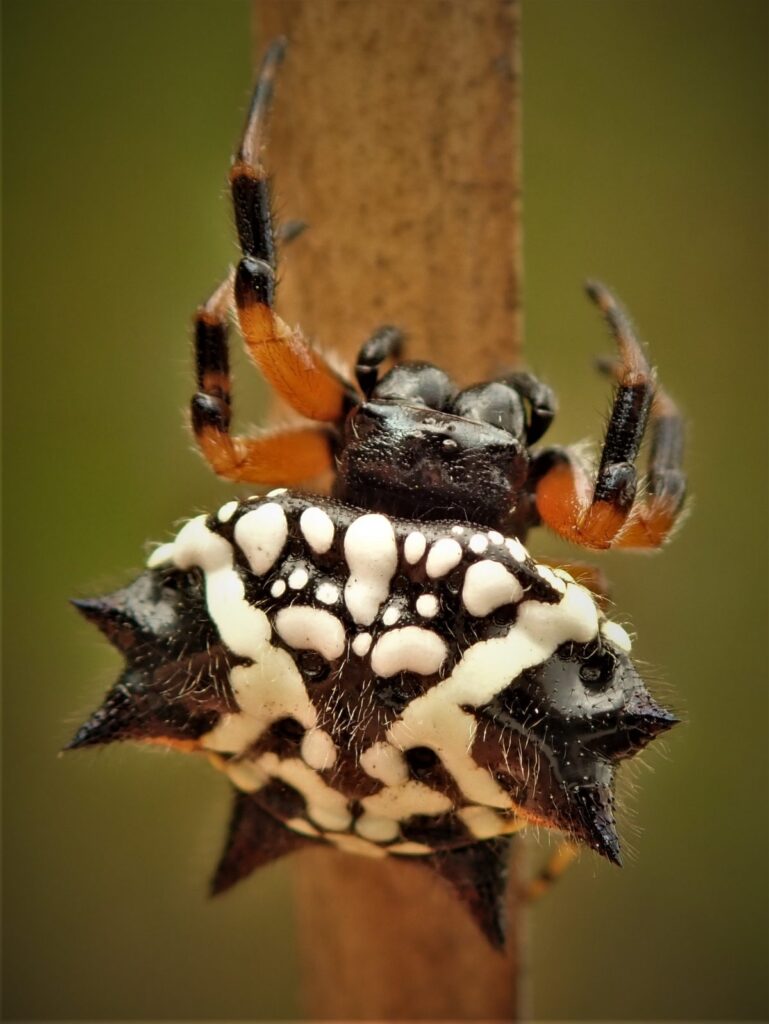
The Big Punchbowl itself is the largest of a number of circular basins (known as deflation hollows) on the reserve, thought to be wind-erosion hollows formed during the Cainozoic. The depressions are very shallow and apparently only hold water following heavy rain. Ducks evidently enjoy visiting then, but happily, the old duck-shooting hides have fallen into disuse. About half a kilometre across, the centre of the Big Punchbowl is a mass of grey and dry freshwater sedges and rushes surrounded by a barren margin of cracked mud (due to the wet/dry cycle), with Kunzea scrub around the perimeter. The dominant grey was enlivened by flashes of colour as yellow-winged grasshoppers leapt from the rushes. There was much evidence of Bennetts wallaby; wombats had been digging for roots of rushes, and in the apparently barren zone, banksia and kunzea seedlings were springing up.
As Keith Corbett noted in his report to TLC on the geomorphology, “progressive ingress of vegetation around the margins…suggests the wetted area has been shrinking”. This ephemeral pond would look delightful after rain in spring when the rushes are green and flowers are in blossom. The presence of Aboriginal stone atefacts is testimony to the past productivity of the site.
In the afternoon we walked to the foreshore of Moulting Lagoon and watched Caspian Terns diving (rather successfully) for small fish. Moulting Lagoon is fringed by a dense succulent saline herbaceous plant community, mainly Sarcocornia, its bright green eye-catching after the grey tracks in the dry woodland.
Although we did not see the hoped-for White-bellied Sea-eagle, on our return we spotted a pair of Black-faced Cuckoo Shrikes.
With 9 starters on Sunday, we followed tracks through more heathy country with sandy soil to the south of Barney Ward’s Bay, returning via Barney Ward’s Lagoon, a small intermittent lagoon almost connected to the coast of Moulting Lagoon and characterised by succulent saline herbland vegetation.
We were amazed at the number of Feather horned beetles Rhipicera femorata zooming over our heads along the track. At last one stopped long enough for a photo!
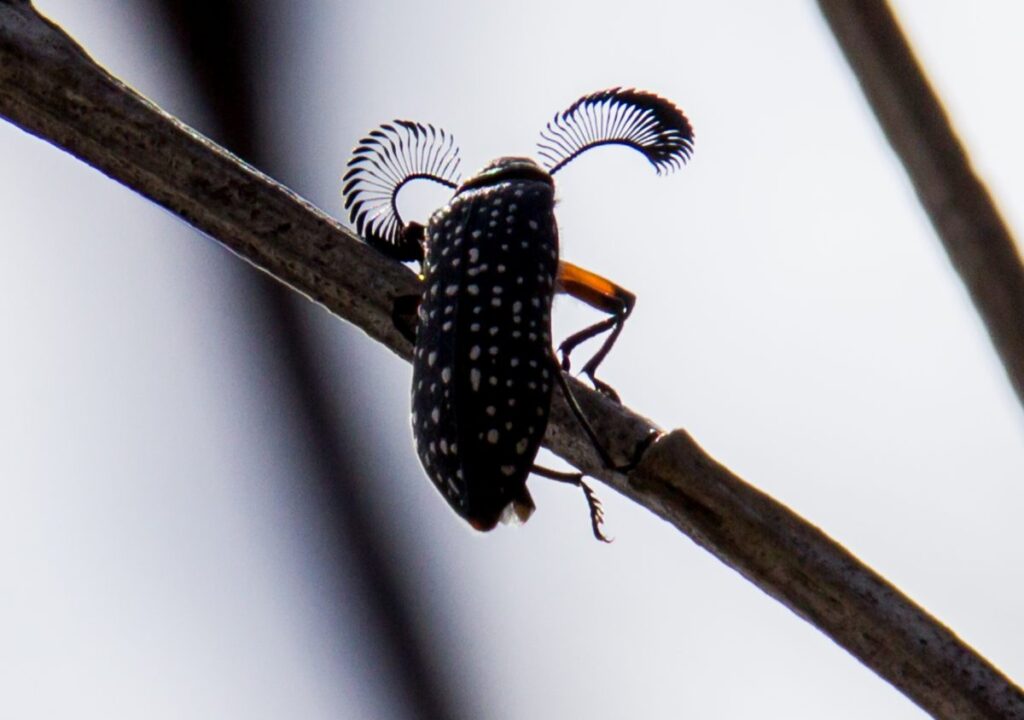
Another less cooperative subject for the camera was a Mountain Dragon, its patterned grey body almost perfectly camouflaged amongst the grey leaf litter. A large jewel beetle (28mm long) Themognatha mitchelli was found on the track, probably dead, or “playing dead” very effectively. Amanda followed wolf spiders all day with her camera, and was surprised by their abundance in the dried up basin of Barney Ward’s Lagoon. Another visit to this reserve, in springtime after rain, would be worthwhile.



